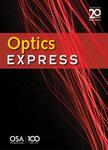版权所有:内蒙古大学图书馆 技术提供:维普资讯• 智图
内蒙古自治区呼和浩特市赛罕区大学西街235号 邮编: 010021

作者机构:Lawrence Livermore Natl Lab Div Mat Sci 7000 East Ave Livermore CA 94550 USA
出 版 物:《OPTICS EXPRESS》 (Opt. Express)
年 卷 期:2016年第24卷第24期
页 面:27077-27086页
核心收录:
学科分类:070207[理学-光学] 07[理学] 08[工学] 0803[工学-光学工程] 0702[理学-物理学]
基 金:US Department of Energy (DOE) by Lawrence Livermore National Laboratory (LLNL) [DE-AC52-07NA27344] Laboratory Directed Research and Development (LDRD) programs of Lawrence Livermore National Laboratory (LLNL) [15-ERD-019]
主 题:High numerical aperture optics Laser scanning Micro Raman spectroscopy Photon counting Photosensitive materials Two photon polymerization
摘 要:Two photon polymerization (TPP) is a precise, reliable, and increasingly popular technique for rapid prototyping of micro-scale parts with sub-micron resolution. The materials of choice underlying this process are predominately acrylic resins cross-linked via free-radical polymerization. Due to the nature of the printing process, the derived parts are only partially cured and the corresponding mechanical properties, i.e. modulus and ultimate strength, are lower than if the material were cross-linked to the maximum extent. Herein, post-print curing via UV-driven radical generation, is demonstrated to increase the overall degree of cross-linking of low density, TPP-derived structures. (C) 2016 Optical Society of America